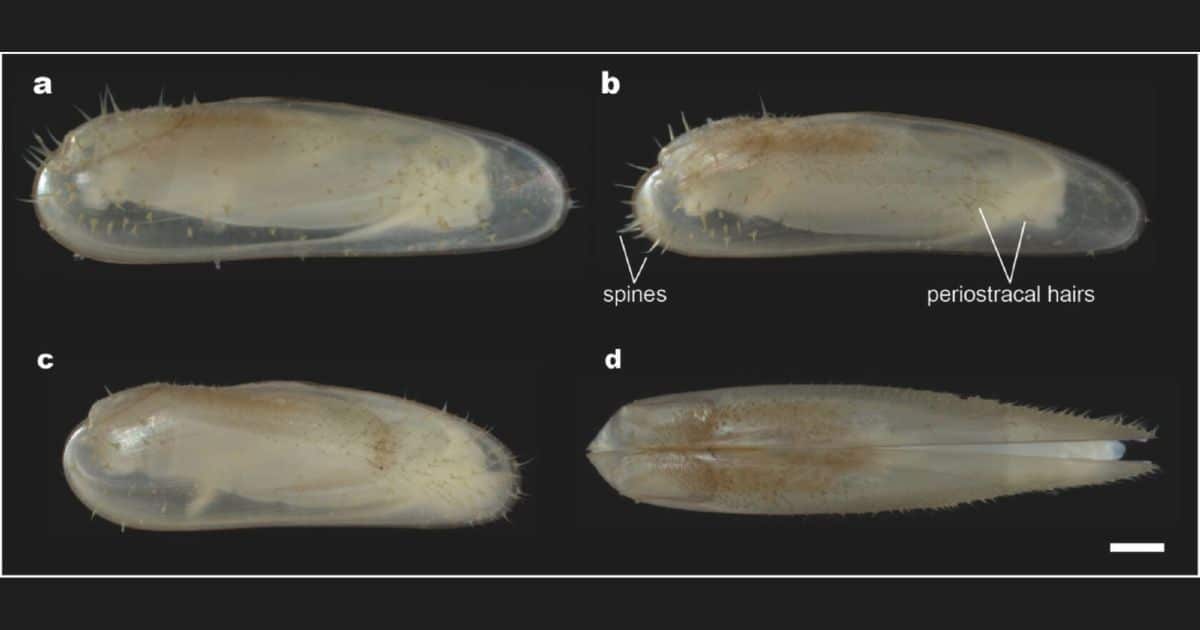The mussel, named Vadumodiolus teredinocola, represents both a new genus and species of bathymodiolin mussel.
Discovered at a depth of 18 meters in the submerged remains of an ancient bald cypress forest off Alabama’s coast, Vadumodiolus teredinocola thrives in what is now known as the Alabama Undersea Forest. This unique site, believed to have been submerged between 72,000-45,000 years ago due to sea level rise, features well-preserved tree stumps and fallen limbs, resembling an ancient riverbank.
Prof. Dan Distel, Director of the Ocean Genome Legacy Center, emphasized the significance of this discovery: “In protecting our planet, lack of knowledge is the greatest challenge—we cannot protect what we do not know and understand. This new species discovery, and the many to follow, are critical pieces of an extraordinary puzzle. By exploring the incredible diversity of life in the sea and the rich information hidden in its genomes, we learn the best ways to safeguard our planet’s delicate ecosystems. We are thrilled to contribute to Ocean Census in this extraordinary journey of discovery and preservation.”
Vadumodiolus teredinocola, a tiny marine mussel that can easily fit on the tip of your pinky finger, marks a significant find. It is the first shallow-water member of its group, previously known only in cold, dark, deep-sea environments ranging from 100 meters to over 4,000 meters (300 feet to more than 13,000 feet). This group includes giant mussels that feed on toxic gases—hydrogen sulfide and methane—spewed from deep-sea volcanic hot springs called hydrothermal vents.
As the first species named and described under the new Ocean Census program, this discovery kickstarts a global mission to uncover 100,000 new ocean species over the next decade. Launched by The Nippon Foundation and Nekton, the program aims to bridge the knowledge gap in marine life and enhance global ocean exploration capabilities.
Alex Rogers Science Director, Ocean Census, expressed his delight over the Ocean Genome Legacy’s contribution: “This species demonstrates that this group of mussels are found not only in deep-sea environment, such as on wood or in chemosynthetic ecosystems like hydrothermal vents and seeps, but also in shallow waters. It fills in an important gap in our understanding of the evolution of these animals, which is particularly special. We look forward to other researchers globally contributing their findings to Ocean Census as well as joining us on our expeditions to seek out new life.”
Joining as a founding partner, the Ocean Genome Legacy Center brings over two decades of marine genomics expertise to the Ocean Census Alliance. Their focus will be on preserving marine DNA and advising on the development of a Cyberbiodiversity system, providing open access to biological samples and data for scientists, policymakers, and the public.
The mussel Vadumodiolus teredinocola was recently detailed in the journal Deep Sea Research Part 1 204 (2024) 104220 where you can also download imagery and video.

